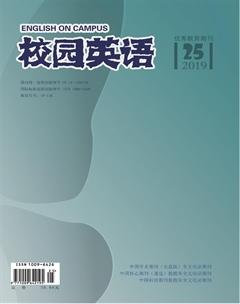Exploring Ang Lee’s Evolving Queer Philosophy through His Cinematic Pink Triangle
In July 2016, President Barack Obama announced the designation of the first national monument—The Stonewall National Monument dedicating to lesbian, gay, bisexual, transgender and queer rights. It was considered as a LGBTQ rights milestone in American history. However, a sobering report released by the National Coalition of Anti-Violence Programs in August 2017 noted a consistently and steadily rising number of reports of anti-LGBTQ homicides. For all the talk of equal rights for sexual minority people, sex-based discrimination is still rife in the society.
Films, as a legitimate artistic medium worthy of serious consideration and Hollywood, as an extremely important cultural institution, play a crucial part in constructing, modifying and spreading cultural beliefs about the LGBTQ community through their cinematic queer portrayals. While one cannot deny that there has been an increasing number of queer films entering into mainstream culture and the proliferation of queer content indeed brings positive impact, it is still important for one to notice the difference between the notion of quantity—the number of queer characters presented in films and the concept of quality—the way that those queers act, feel, and engage in storylines (Ott and Mack, 204). Scholars have kept discussing the possible implications of increased visibility which may turn out to not be as progressive as it initially seems.
Against the backdrop of these ongoing debates over queer visibility and queer portrayal, Ang Lee, a heterosexual director with no explicit ties to queer political work, managed to produce three queer-themed films—The Wedding Banquet (1993), Brokeback Mountain (2005) and Taking Woodstock (2009) that received critical acclaims. The Wedding Banquet is a romantic comedy which makes light of the absurd social conventions that gay and lesbian couples are forced to conform to in order to fit in the society. Brokeback Mountain is a tragic western which depicts the shame, self-loathing, and loss that sexually different people often face in societies that are hostile to their distinct way of being and lifestyle. Taking Woodstock is a comedy-drama but deals seriously with Elliot Tibers struggle for sexual liberation and self-actualization.
Although these films differ in genre, levels of sophistication and depth of political engagement, they all center on the issues of gender, sexuality, and identification. By adopting the tools and methods of queer theory for analysis, the author finds there are internal developments in terms of queer portrayal in these films which in turn reveal Lees changing queer philosophy. First, as for gender issue, Lee moves from portraying Wai-Tung as the masculine, dominant and active “husband” and Simon as the effeminate, subordinate and passive “wife” in The Wedding Banquet, to the ambiguous portrayal of Jack and Ennis as both with traditional exemplary masculinity and feminine traits in Brokeback Mountain, then to the portrayal of Elliot and Vilma as gender queer in Taking Woodstock. This reflects Lees view toward gender transforms from seeing it as either male/masculine or female/feminine binaries to challenging and understanding it as something varied, fluid and complex. Second, with regard to sexuality, Lee also moves from portraying Wai-Tung and Simon strictly along homosexual/heterosexual binary, to the vague portrayal of Jack and Ennis as neither being gay or straight or bisexual, then to the portrayal of Elliot and Vilma as sexual queer in terms of their diverse sexual orientation and fluid sexual attraction. This reflects Lees view toward sexuality transforms from seeing it as a simple homosexual/heterosexual binary to seeing it as something diverse, fluid and difficult to categorize. Third, Lee also moves his protagonists from the “margin” to the “center” at both the individual level and societal level. The former refers to the dimension of their self-recognition and self-assurance, and the latter refers to the dimension of social acceptance and inclusion. To this point, Lees view also seems to transform from assimilating into heteronormative mainstream to attacking the power of heteronormativity.
Generally, through years of exploration and portrayal, Lee becomes more and more aware of the diversity, fluidity, and non-standardization of identities. He now shows an ever-growing tolerating and welcoming attitude toward ambiguity and difference in all its forms. Furthermore, the contemporary emerging queer-themed films with a sense of normalcy, reality and even poignancy also reveals Americas changing attitude towards sexual minorities—they are, to some extent, more acceptable and less alienated than before.
【作者簡介】刘心怡(1992.12.26-),女,云南人,北京外国语大学商学院教师,硕士研究生,研究方向:美国研究,电影研究,跨文化研究。

